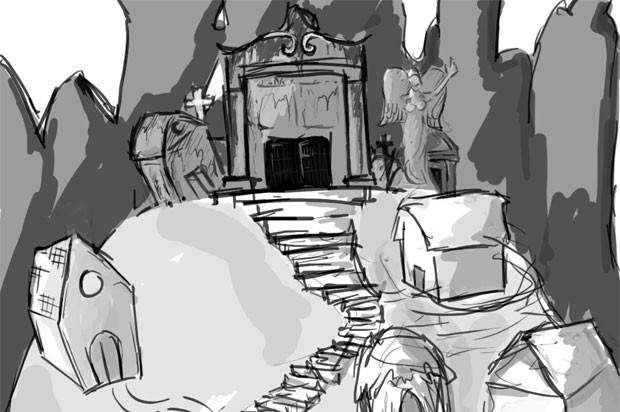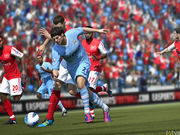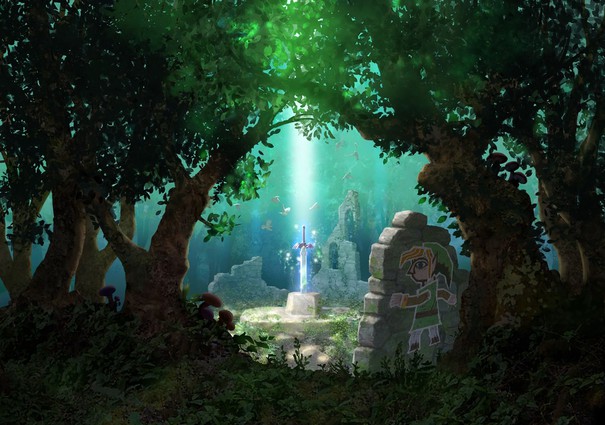


Hello fellow MMO’ers and gamers alike. Last week it dawned on me that new players exist in MMOs, and games in general. This became apparent when a few friends of mine asked me to explain “Dungeons” to them. Suddenly I realized that the action-packed group instances that we have all come to know and love are completely alien to new players. So here it is, my simple universal guide to dungeons and other group instances.
Group instances, often known as Dungeons or Raids, are slices of gameplay played separately from the main quest world. These “instances” (just a shorter way to say “not in the main questing world”) are almost always made with groups in mind and can take anywhere from 5 to 40 players (each with their own role) to complete these chunks of gameplay. The structure generally involves: killing some enemies, killing a stronger enemy (or “boss”), and repeat until you reach the end of the dungeon. Upon completion you often get a large dose of XP and/or an item to add to your character, such as a sword of piece of armor. Most dungeons can be played relatively easily by new players, simply by following the group leader and doing as he/she directs you. That’s not to say they are all so simple, but we will get to that later.
Now, probably the most important part of dungeon mechanics is the role system. It is very important for you to know who you are, and what you should be doing. Most MMOs, with a few exceptions, have a clear set of roles that need to be filled in order to effectively complete an instance. In this example I will refer to the mechanics of World Of Warcraft, since it is best known and the basis of most other games’ dungeons. In WoW (World Of Warcraft) there are three roles. They are: DPS (Damage Per Second), Healer, and the Tank. A basic five man dungeon group should consist of three DPS classes, one Tank, and one Healer.
While some roles are harder to find than others, it should be noted that no role or class are more important than another in a dungeon group.
Often considered the base of the team are the DPS, or “Damage-Dealers.” It’s the job of these guys to deal as much damage as possible to the enemy, ultimately being the death of it. The rules of this role are fairly simple: follow orders from the group leader (often the tank or healer) and kill the targeted enemy as quickly as possible. As a DPS, it is your responsibility to know and understand how your character works, and what attacks to use in order to maximize damage per second. Due to the straightforward goal of this role, it is often a favorite for new players. This is where I would recommend you start, at least until you understand instances a bit better. It should be noted however that this is not a “noob role.” The best of players have DPS classes too, and they make up the majority of the player-base on most games.

Dungeon Queue Notification in World Of Warcraft.
Pretty self explanatory, the healer is responsible for healing the group. While they are usually held accountable for the deaths of any group member, it is the ultimate goal of the healer to ensure the tank survives before worrying about anyone else. Of course, the healer also needs to keep themselves alive, otherwise the group will most likely fail. This role will almost always stay out of battle, concentrating his/her powerful healing spells on the group member that most needs them, which will most likely be the tank. Personally I consider the healer the “next step” from dps. This role has increased responsibility and should not be played if you are not familiar with dungeons.
The tank is the heavy hit taking member of the group. Often considered the hardest class to play, the tank should use “threat generating abilities” to attract the attention of the enemies, ensuring they are hitting him/her and not the often less armored DPS or Healer roles. Since the tank has to decide how many enemies he can keep on him at once, he is often appointed as the leader of the group. This role is not for the faint-hearted, and you should expect to fail a lot when you first try this class until you have the hang of it. Due to the relatively complicated play-style, tanks are often hard to find. However, this does give tank classes the advantage of being sought after, allowing them to enter instances much quicker than most classes.
In short, the role system works like this: the Tank distracts the enemy while the DPS kill him. All the while, the Healer ensures the tank has maximum health, and the DPSs’ health is topped up should it need to be. This applies both to dungeons (usually 5 man) and the more high level “Raids” (10-40 man). The system works excellently with everyone doing their correct role. This is clearly visible in raids and larger groups, though in the smaller dungeon teams it isn’t rare to find things going wrong. Here are some things that regularly happen in dungeons and how to best avoid them.
Starting off with the worst, “Wiping” is slang for “everybody died.” This can happen for a variety of reasons, often one or more of the other reasons I will discuss. The best way to avoid this scenario is to ensure everyone does their role correctly, and work together as a team. Dying does not indicate the end of the instance (usually), and you should be ready to jump back in to the game when everyone is ready. Read on for more ways to avoid this moral-breaking disaster.
Aggro is basically the measurement of how much an enemy wants to attack you. It is the tanks’ job (as discussed above) to keep his aggro maximised to ensure the other team members don’t get killed. If the tank somehow loses this aggro, or another player’s aggro becomes higher, the enemy will usually attack the other player. This often results in an enemy taking out another vital member of the team, which may lead to a wipe. To best avoid this, keep an eye on the aggro % (shown above the enemies portrait in WoW) and player portraits. Player portraits will glow golden if they have high aggro on an enemy, then turn to red if they become the target. As a tank you must act before this happens by knowing and using your abilities to keep aggro on you. As a DPS or healer you will often gain a lot of aggro; you should also keep an eye on the aggro % above the enemies’ portraits. Don’t be afraid to back off for a few seconds, allowing the tank to regain control should you need to. If you do find yourself in a situation where the enemy is attacking you and not the tank, it is usually wise to lead the enemy towards the tank, allowing him to regain its attention.
What often leads to the death of new dungeon players are AoE (Area of Effect) attacks. These will not be targeted at an individual player, but rather cast on the floor near players. When concentrating hard on downing a boss, it is easy to walk over (or not move from) one of these static attacks, resulting in death to you or your team. To avoid this you should always keep an eye on the floor – AoE attacks will almost always have effects (such as fire, or cracks) on the ground indicating that its time to get out of the way. It should be noted that Healers also have AoE Healing affects that you do not want to run away from. Do your best to learn what these look like.
While there are many things that can go wrong in an instance, most of them can be avoided by simply playing your role. Thank you for reading this guide! I hope it helped you in some way. I will leave you with tips from around the MMO gaming community. Happy hunting!



